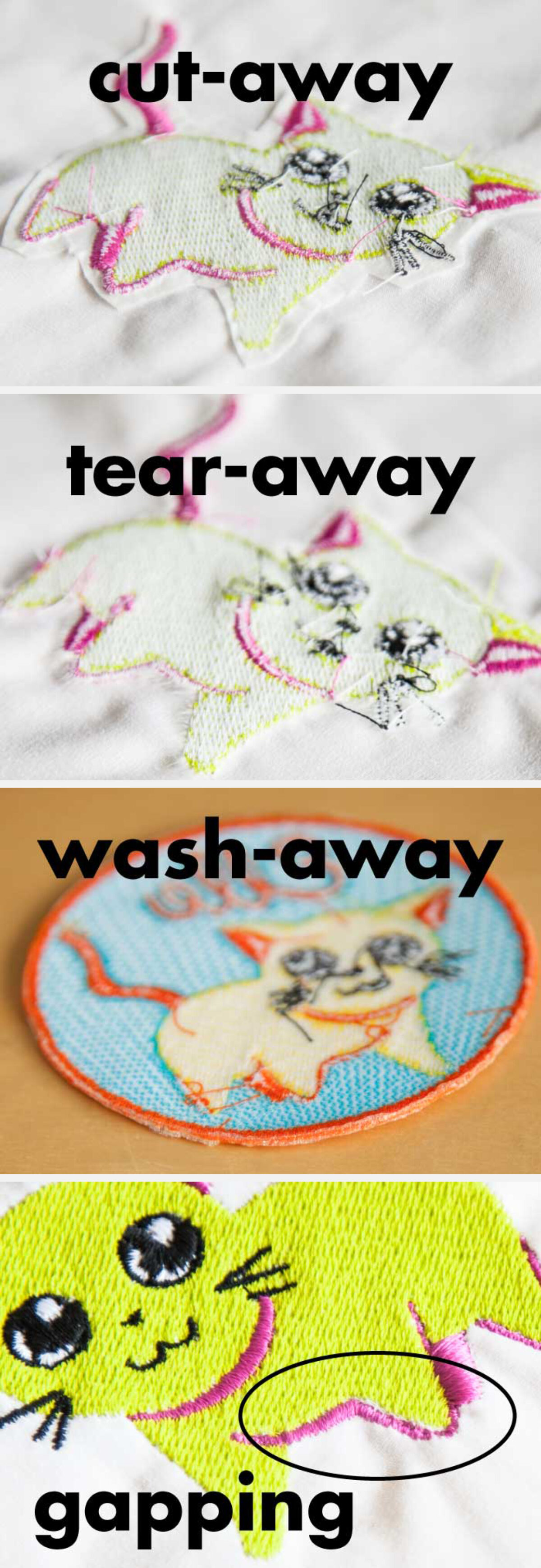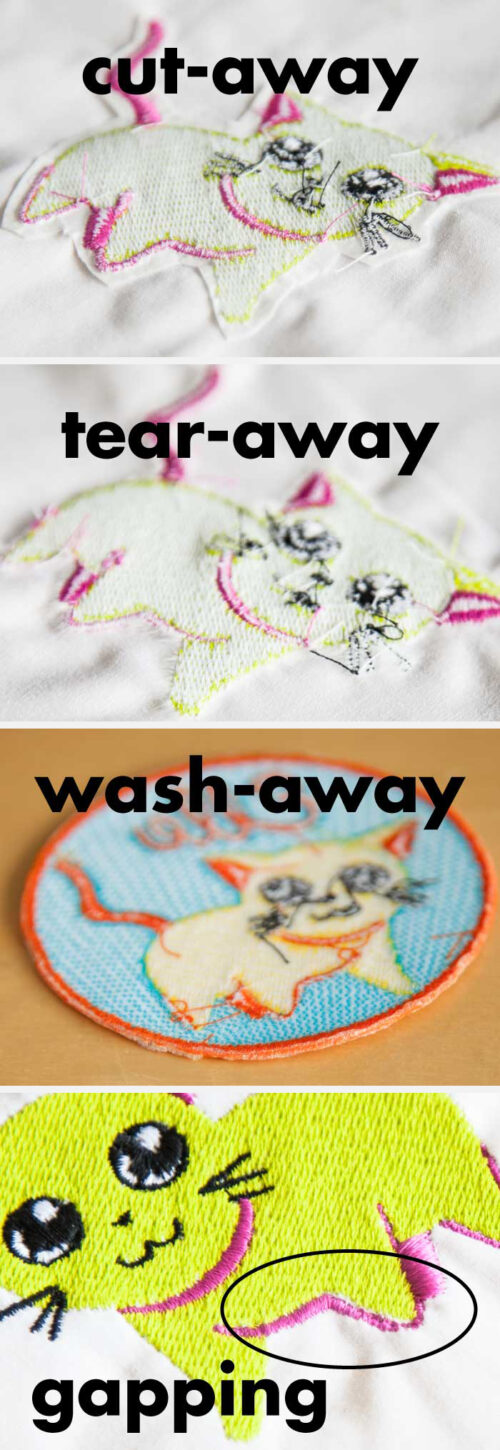
Choosing an Embroidery Stabilizer
There are many factors that determine the best stabilizer for an embroidery project. It is always best to consider your options, and plan on testing combinations of fabric and stabilizer with your design. For example, if you plan on embroidering on your favorite jean jacket, test your design first using a piece of scrap denim, and stabilizer. It is never recommended to start your design with something “irreplaceable.” These are general tips, and they may not cover all possible scenarios.
Stabilizers Available at the Service Desk
Cut-away – designed to be cut away from the edges of the design. It provides strong support, prevents puckering and gapping well, but may appear/feel stiff with softer fabrics.
Tear-away – designed to be torn away from the edges of the design. They provide medium support, but they aren’t as strong as cut-away. Tear-away stabilizer leaves a clean finished edge.
Water-soluble – designed to wash away from the finished design. It provides a base during the stitching process, but is dissolved in the final piece. Can be used with sheer fabrics, freestanding lace, or when making pieces with finished edges – like badges.
Things to Consider
How dense is your design? Dense designs may need more stabilization. Some fabrics are not meant to withstand many holes being punched in it. If you are using a strong fabric, you may not need as much stabilization.
How light or heavy-weight is your fabric? Is it stretchy (knit – t-shirt or sweatshirt)? Stretchy fabric won’t “hold” a design as well without giving, and you may see a lot of gapping. Strong stabilizing will prevent stretching, but it might appear stiff.
If you aren’t sure what stabilizer to use, we generally recommend starting with 2 layers of medium weight tearaway. It will leave a clean edge, and pretty substantial support. After testing, evaluate your product – is it too stiff? Do you have gaps or irregularities in your design?
